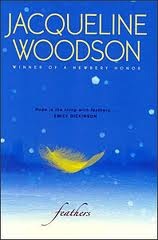By Andrea García, Hofstra University
–
Happy summer to the kids of New York City.
Read for joy.
Write for yourselves.
Rebecca Stead (http://rebeccastead.blogspot.com/ )
–
It is officially summer! As the school year comes to an end, and teachers pack up their classrooms, I have selected to focus my last blog entry for the month of June on sharing examples of a multimodal response project created by teachers to the 2010 Newberry award-winning book When You Reach Me by Rebecca Stead. This book was one of the choices I made available to teachers in my Children’s Literature course this past spring, and since it is a book that invites us to consider the possibility of time travel, why not use Stead’s work as inspiration as we imagine what we will do, what we will read, and what we will write this summer.
Continue reading





 Reading books together and discussing them within a community of readers is at the heart of the process of constructing meaning and negotiating the multiple dimensions that literature has to offer. This month, the focus of my blog is in sharing the literary transactions of a community of elementary teachers, who were invited to document their interpretations to different books through engaging with multiple response strategies while exploring the use of children’s literature in the elementary classroom. Since one of my goals as a literacy educator is to bring books to people
Reading books together and discussing them within a community of readers is at the heart of the process of constructing meaning and negotiating the multiple dimensions that literature has to offer. This month, the focus of my blog is in sharing the literary transactions of a community of elementary teachers, who were invited to document their interpretations to different books through engaging with multiple response strategies while exploring the use of children’s literature in the elementary classroom. Since one of my goals as a literacy educator is to bring books to people 



